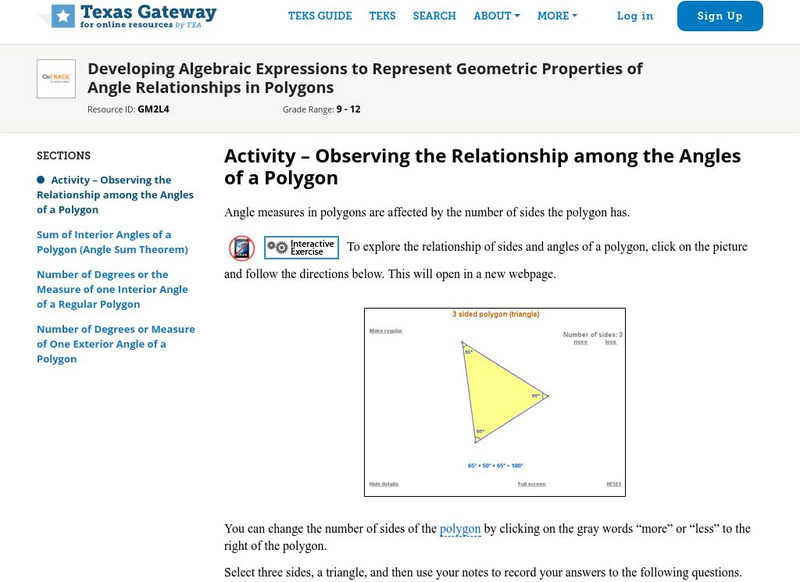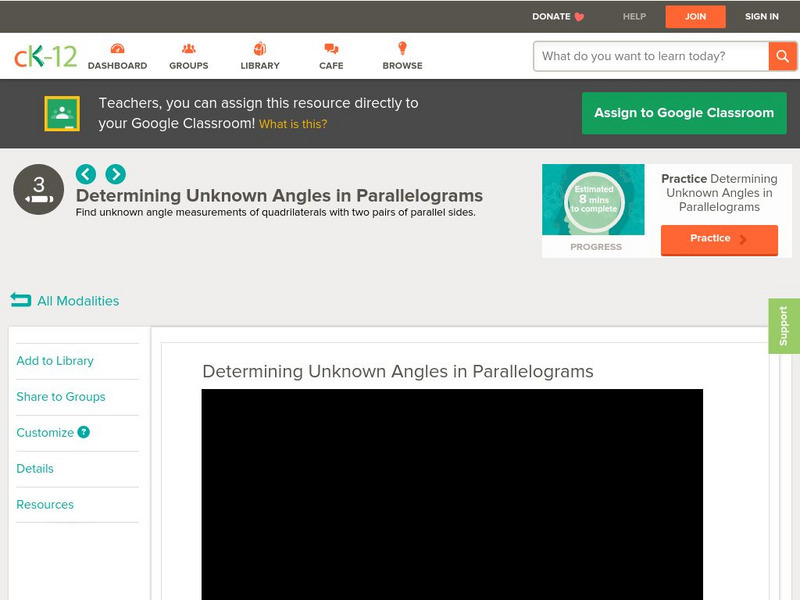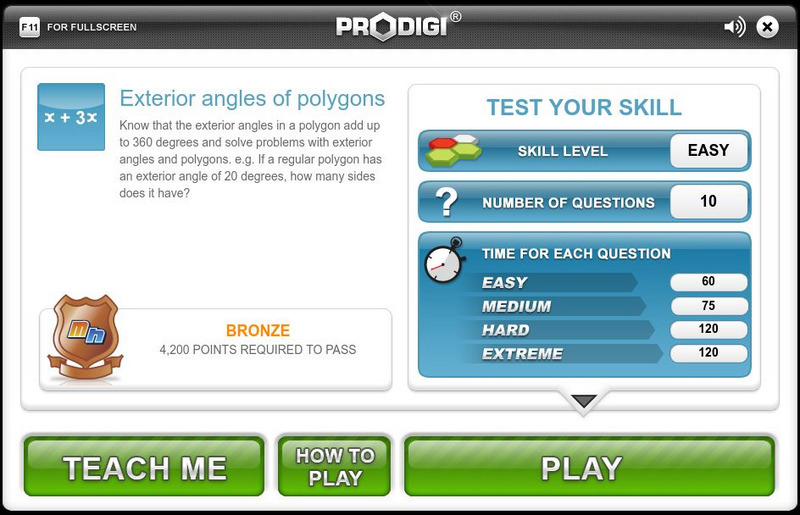Hi, what do you want to do?
Curated OER
CSI Investigation of Congruence and Similarity
High schoolers differentiate between similarity and congruence using polygons. In this geometry lesson, students label triangles based on their properties. They find missing sides and angles using the interior sum theorem.
Curated OER
Chalkboard Challenge: Fifth Grade Math Review
This PowerPoint addresses fifth grade math concepts, focusing mostly on geometry. The interactive math review game is in a "Jeopardy" style format and enables students to revisit the topics in geometry such as polygons, quadrilaterals...
Curated OER
Perimeter
In this perimeter worksheet, 10th graders solve and complete nineteen various geometry problems. First, they find the length of given segments in addition to the perimeter of a kite. Then, students find the value of a variable so that...
Curated OER
How Many Regular Polyhedrons Are There In This or Any Universe?
Students examine the idea of "regularity" as it pertains to geometry. In this geometry lesson students complete several assignments that are part of trihedral angles and regular polyhedrons.
Houghton Mifflin Harcourt
Introducing the Concept: Triangles and Quadrilaterals
Guide your geometers through the process of constructing polygons. They learn how to draw triangles, squares, parallelograms, rectangles, rhombuses, and trapezoids with specified angles using a protractor and a ruler. The lesson plan...
Curated OER
Crossword: Geometric Shapes
Using a word bank, mathematicians fill out a crossword puzzle using 9 clues. Each clue describes a shape, using details such as the number of sides, angle degrees, and the shape category. For example: "A quadrilateral with four equal...
Houghton Mifflin Harcourt
Developing the Concept: Triangles and Quadrilaterals
Exact narrative and examples make this lesson on polygons easy to implement. Through it, your class will learn how to use a protractor and ruler to construct triangles and quadrilaterals according to your directions. Your class will be...
Curated OER
Picking Pythagoras
Students discover that side measurement is used in determining angle classification of a triangle. By squaring sides, they predict whether triangles be right, obtuse, or acute. They prove the Pythagorean Theorem and use it to solve...
Curated OER
Symmetry and Tessellations
Sixth graders investigate tessellations and their origins. Students trace triangles to form a tessellation. They measure the angle of equilateral triangles. Students locate the line of symmetry, they create geometric squares,...
Curated OER
Chapter 6: Geometry Perimeter and Area
In this perimeter and area worksheet, students find the perimeter of various polygons. They compute the perimeter, surface area, circumference, and volume of given figures. Students explore trigonometric ratios. This...
Curated OER
Math is Beautiful
Students explore how geometry is used on the composition of artworks by artists from different cultures. This lesson is equally suited for a Math or Art classroom at the late-elementary or early-middle school level.
Curated OER
Designing a Quilt Pattern
Students create and color a one-patch quilt design based upon a regular hexagon. They examine quilts and photos of quilt designs, read a handout, and complete their quilt design on a worksheet.
Curated OER
Tessellations Homework
In this tessellation worksheet, students draw tessellations using specified figures. This one page worksheet contains five multi-step problems.
Curated OER
Math: Equal Area Triangles
Learners examine a math worksheet and determine how to divide a single triangle into four of equal area. Using geometric principles, they sketch two additional ways to divide into into four equal triangles. To conclude, students...
Willow Tree
The Pythagorean Theorem
There isn't a more popular geometry formula than the Pythagorean Theorem! Learners understand the special side relationships in a right triangle. They use the Pythagorean Theorem to find missing sides and to solve problems. They begin...
Curated OER
Solidly Platonic
When they do, they learn. Using this resource, young mathematicians learn about platonic solids by actually building, touching, and examining the shapes. They connect their observations about the shapes to Euler's formula.
Curated OER
Problem-Solving Strategy: Find a Pattern
In this tessellations worksheet, students solve 2 word problems where they use the "make a pattern strategy" to form tessellations from geometric shapes. There is scaffolding for the problem solving strategy.
Curated OER
Tessellations
Seventh graders investigate geometric shapes using tessellations. In this geometry activity, 7th graders practice tessellations using different shapes. They create different designs using tessellations.
Curated OER
Translating Transformations in Geometry
Students create an image using given coordinates and evaluate how the coordinates change when a slide or rotation takes place.
Curated OER
Vocabulary Challenge
In this math vocabulary worksheet, students choose which multiple choice answer best defines twenty-five mathematical terms. Students place their answers on the lines provided.
Math Is Fun
Math Is Fun: Interior Angles of Polygons
Learn what an interior angle of a polygon is and how you can calculate their value in triangles, quadrilaterals, and pentagons. Includes a chart that overviews the "general rule" for determining the sum of internal angles in any polygon...
Texas Education Agency
Texas Gateway: Geometric Properties of Angle Relationships in Polygons
Given numerical and/or geometric patterns that represent geometric properties of angle relationships in polygons, the student will investigate patterns to make conjectures about interior and exterior angles of polygons.
CK-12 Foundation
Ck 12: Elem Math: Determining Unknown Angles in Parallelograms
[Free Registration/Login may be required to access all resource tools.] Students watch a video and attempt practice problems on how to determine missing angles in a parallelogram.
Mangahigh
Mangahigh: Shape: Exterior Angles of Polygons
Explain that the sum of exterior angles of polygons equal 360 degrees.




























